the seductress Dublin is a city that falls in love at first sight. And we do not say this because of its architectural grandeur, in the style of other European capitals, but because it is a city of human dimensions, made tailored to those who want to discover it walking slowly, aimlessly.
In Dublin you have to look at the tones and colors offered by their houses, the colorful doors of Merrion Square or Fitzwillian Square, for instance. Or in the immaculate green of Dublin's parks like the St. Stephen's Green Park.
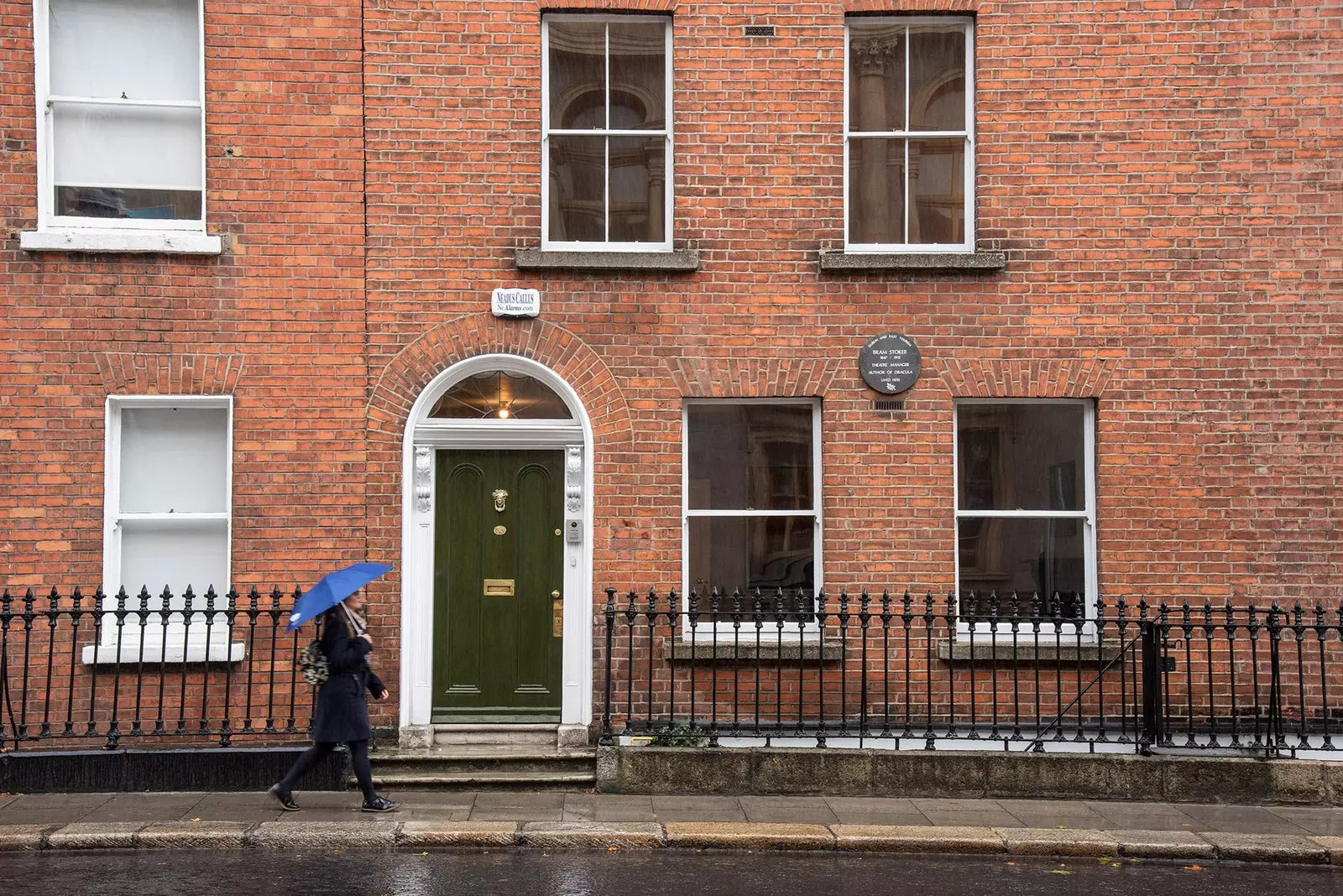
House where Bram Stoker lived, in Dublin.
We can even discover the curious "rainbows" that slip through the streets, when the rain gives way to the sun, who also wants to be an integral part of the environment. But if there is something that dazzles in this city and for which it is known worldwide, it is for its pubs, where you can drink a good Guinness beer while listening to traditional Irish music.
Although we cannot forget that Dublin is the "City of Literature", thus declared by UNESCO. We visited two museums dedicated to letters such as the Dublin Writers Museum and the recently opened "MoLI" , the Museum of Irish Literature.
both dedicated to an excellent plethora of dublin writers, such as (Butler Yeats, Bernard Shaw and Samuel Beckett, who have won the Nobel Prize), and many other great writers (who have lived or were born here), such as James Joyce, Jonathan Swift, Oscar Wilde, Kate O'Brien, O'Casey, Samuel Beckett, Ian Gibson, Bram Stoker, etc, among others.
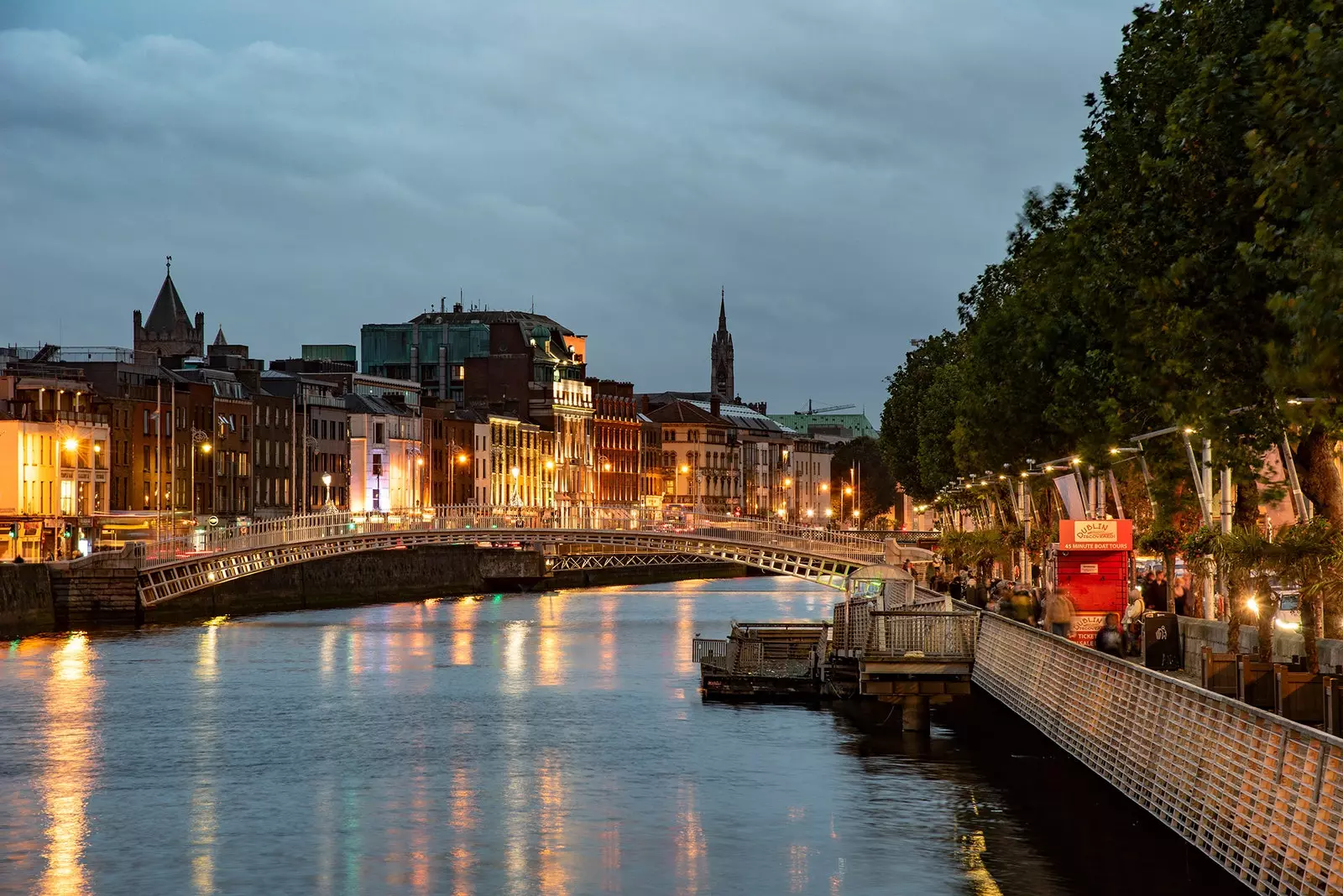
Penny Bridge, Dublin.
This last novelist, author of the great gothic novel Dracula, was born in Dublin in 1847. A city that was part of the United Kingdom and that, in fact, was considered the second most important city in the country. Proof of this are the numerous Georgian and Victorian buildings, some of great monumentality, that abound through the streets of this elegant city and friendly to the pedestrian.
At 15 Marino Crescent Street, a small housing estate built in the shape of a crescent, a boy was born whom they named Abraham Stoker. It was in a bourgeois neighborhood a little far from the center of the capital. Fortunately the house is preserved, although it is private.
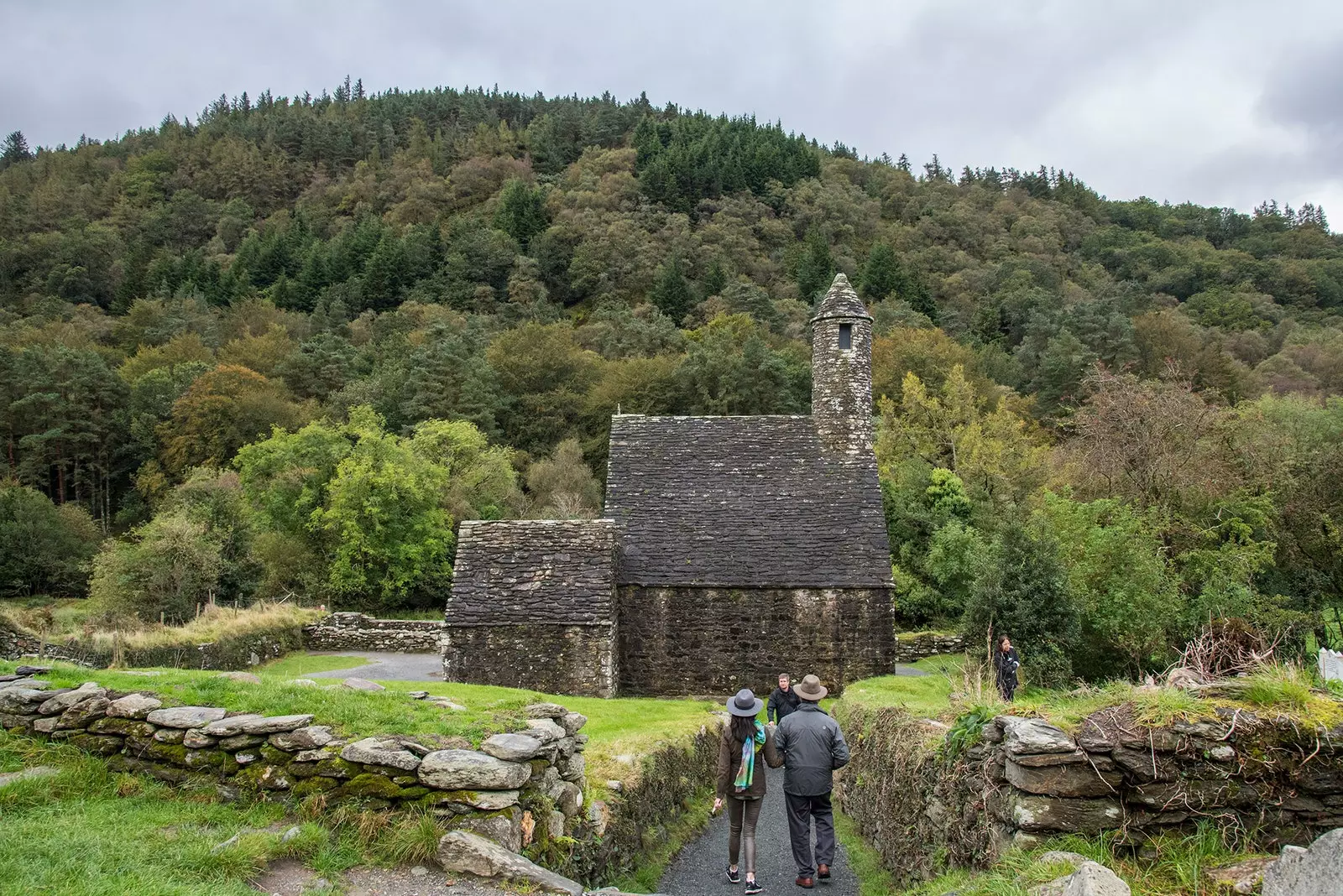
Glendalough Monastery, Dublin.
Just opposite, in honor of the writer, is the park that bears his name and a plaque that commemorates his birth. What Stoker did not know is that, the one who would be his future wife Florence Balcombe, he also lived on the same street but at number 1. He didn't find out until 31 years later, when they met.
Stoker's family was Protestant and middle class. His childhood was quite hard since he spent his first years sick, what made the reading and the stories of mysteries that it seems that his mother told him were his escape valve from a world that seemed distant to him.
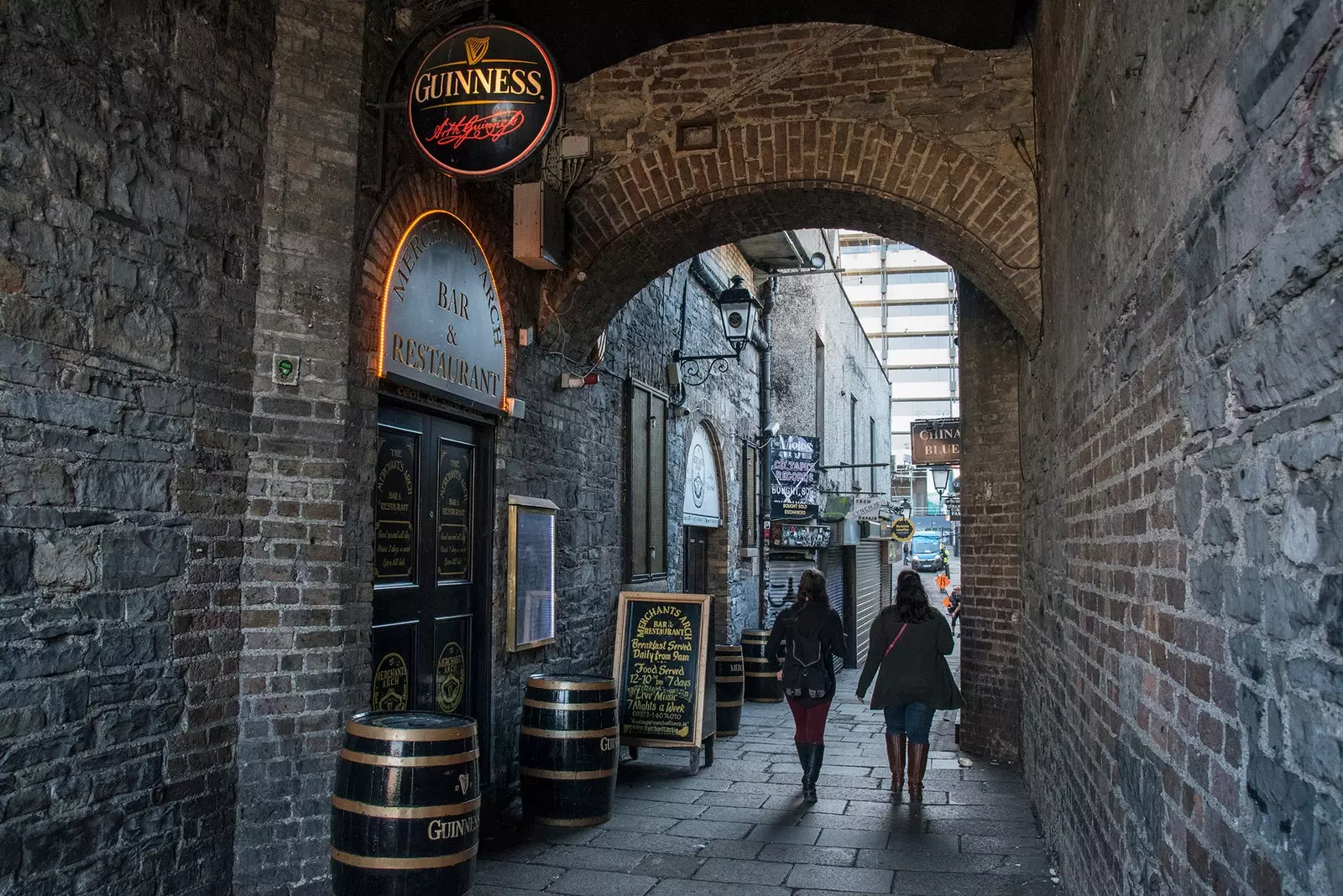
Under the Penny Bridge, Dublin.
STOKER AT DUBLIN CASTLE
At the age of 17 he enters the famous Trinity College, the main university in Ireland, where he would be an outstanding student in math, science and sports during the six years he was there. This university that consists of several buildings, preserves l a Old Library, one of the most beautiful in the world with more than 200,000 old books.
Between the shelves of it is the Book of Kells, a Christian manuscript from the Middle Ages with decorative illustrations of great richness and color with an enigmatic character.
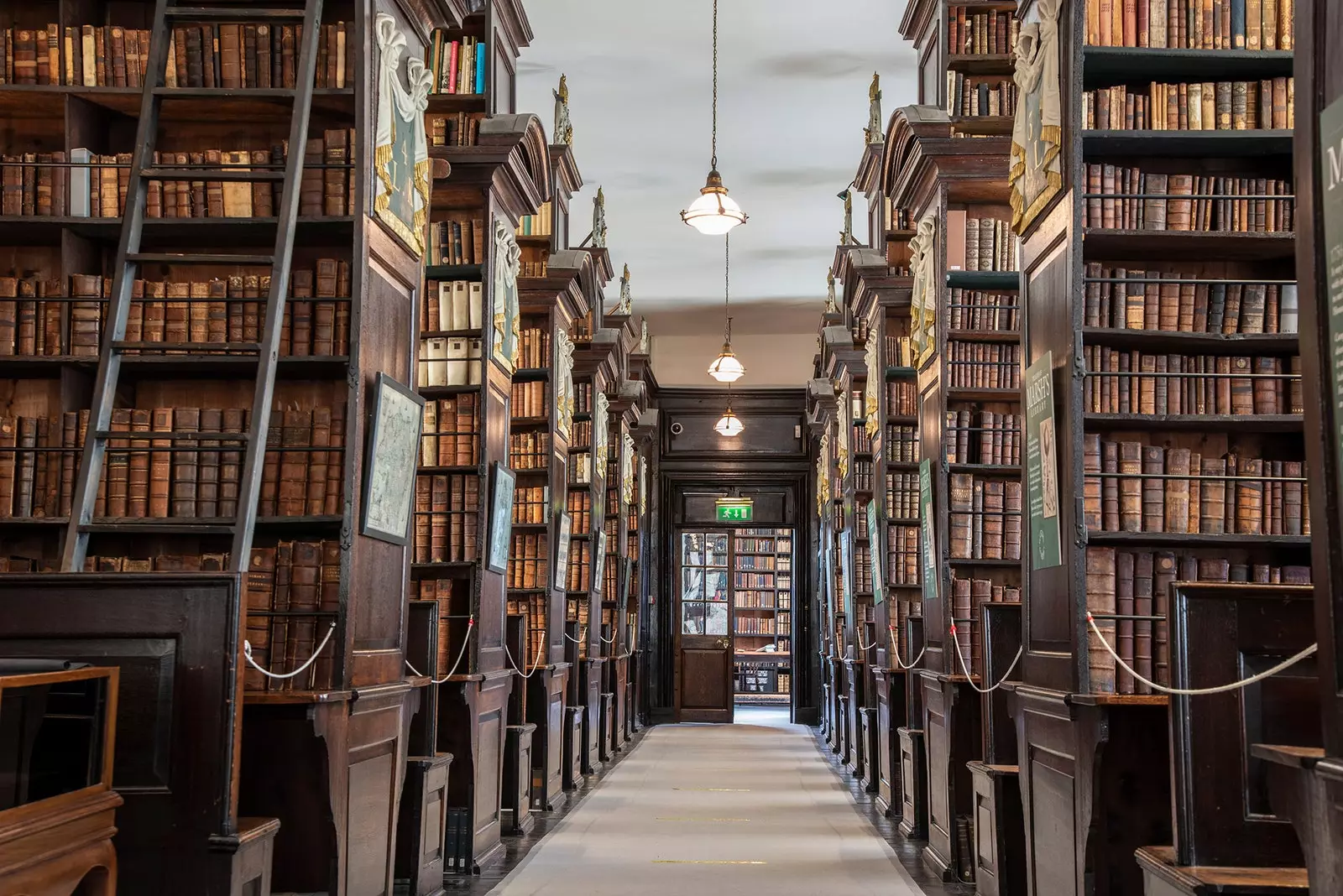
Marsh Library Dublin.
During the last years that he was at Trinity, Bram (diminutive of Abraham) as his companions already called him and he is officially known, he starts working in the same place that his father did, that is, at Dublin Castle. Stoker, a tall and physically imposing teenager, went to work as a clerk, but with no particular fondness for this type of work.
For him it was rather tedious, but His father had three children in college and Bram had to support the family financially with this job. There he would stay working for ten years, until 1878, being promoted to inspector and contributing to the reorganization of the work of all the courts of first instance in the country.
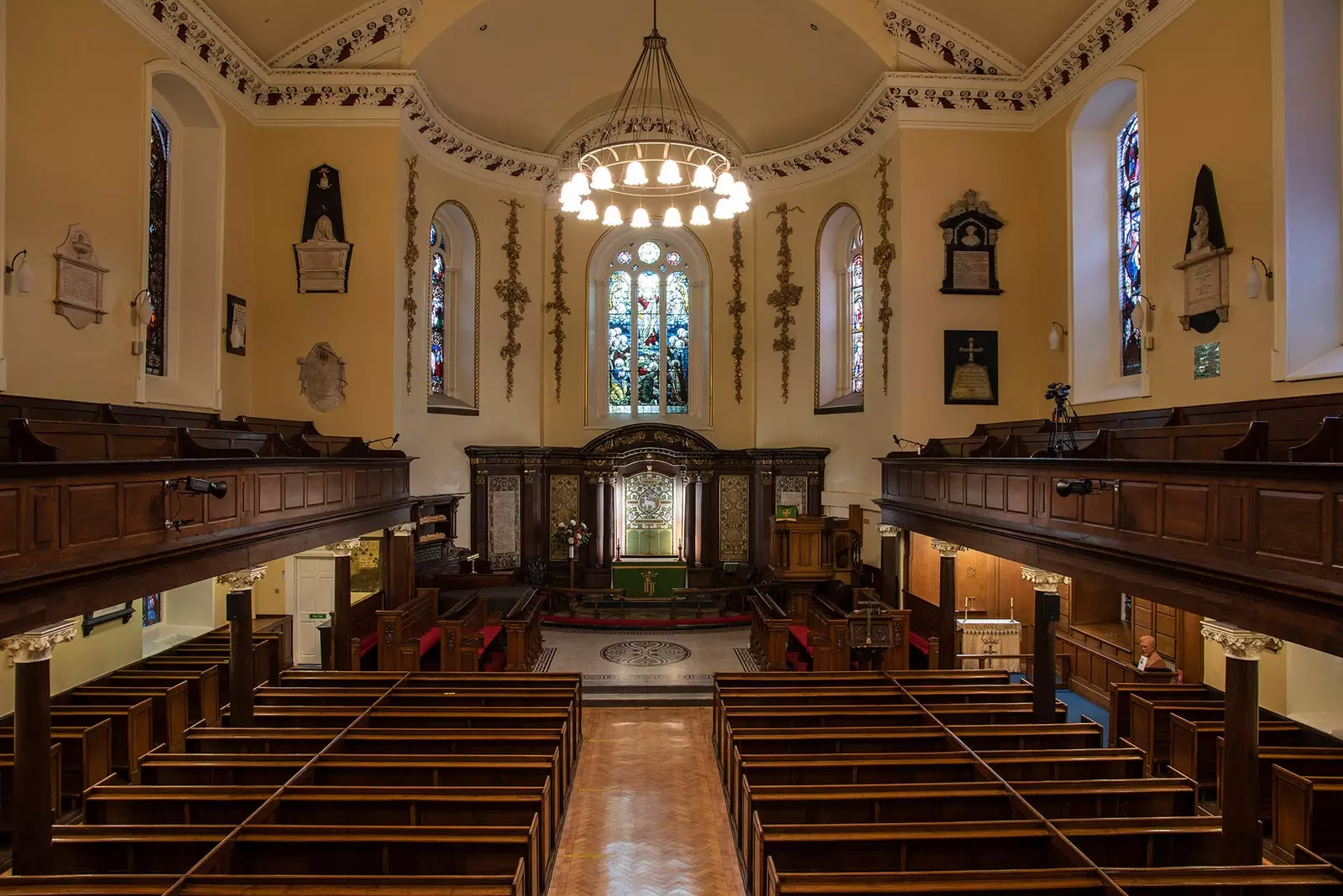
St Anne's Church in Dublin, where Bram Stoker got married.
Dublin Castle began as a Viking settlement, but later became the most important fortification in Ireland. Today it is one of the great attractions of the city, not only because of some of the buildings that are inside the enclosure, such as the only medieval tower that is preserved, the Royal Chapel with an interior of great beauty or the recently discovered foundations of the 13th century medieval castle, but for being the framework of important official acts such as the inauguration every seven years of the president of Ireland.
Stoker, while working at the Castle, changed his residence, but always close to it. One of them at 7 St. Stephen's Green and another at 30 Kildare Street, where a plaque in his honor recalls this fact.
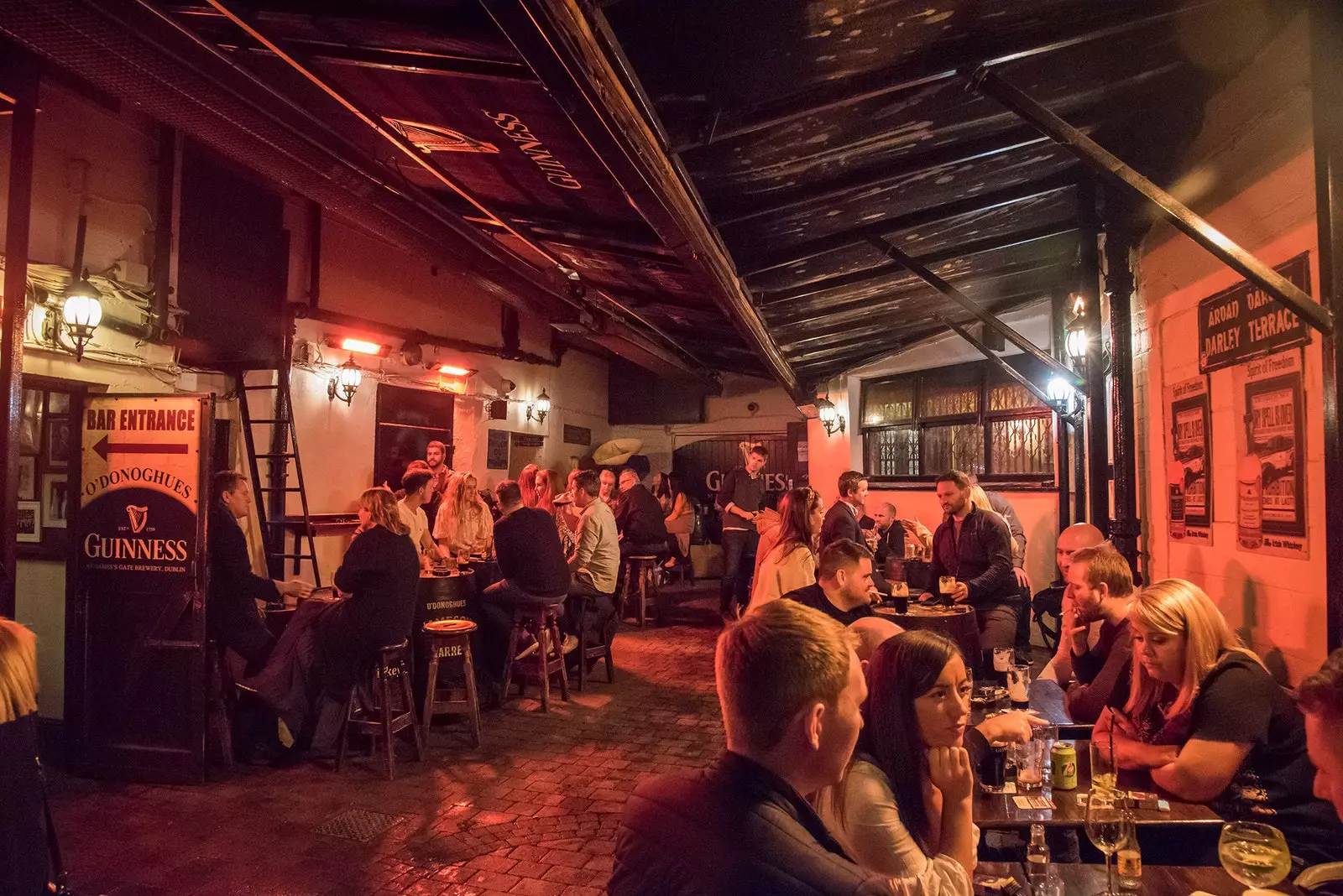
O'Donoghue's pub in Dublin.
During this period of work in the castle, Stoker begins to write the first horror stories of his that, although they were not very well known, They already gave clues for what would come later. He also wrote theater reviews for the Dublin Evening Mail newspaper, whose owner, Le Fanu, was precisely the author of one of the first vampire novels ever written and that, logically, influenced Stoker.
Before leaving his post as inspector in the castle, Stoker writes a manual entitled The duties of the employees of the Courts of First Instance in Ireland, published in 1879 and that would continue in use until the 60s of the last century.
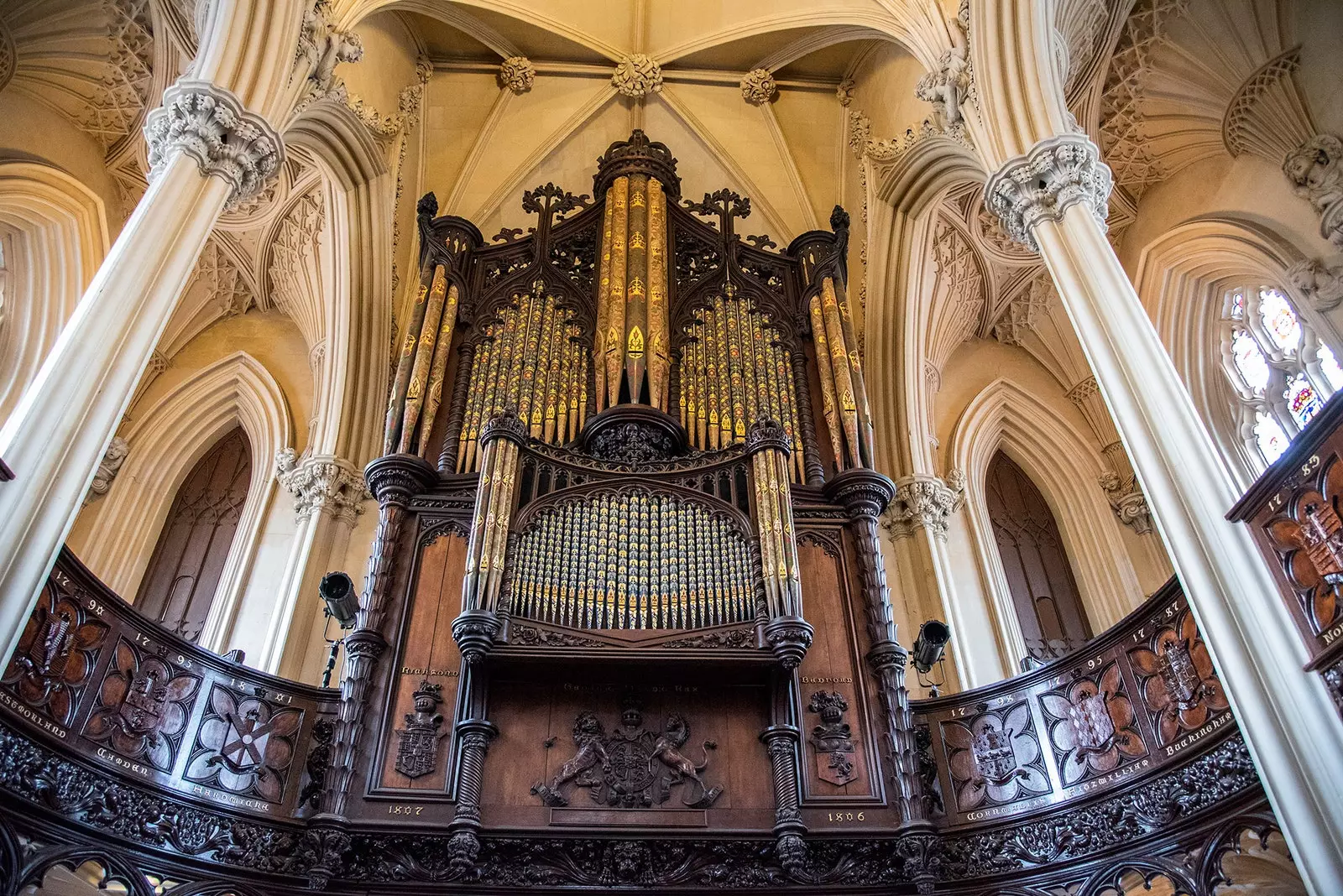
Chapel Royal in the Castle where Bram Stoker worked in Dublin.
MARSH LIBRARY, DUBLIN'S BEST KEPT SECRET
At the age of 18, Stoker visits the Marsh Library for the first time, possibly the best hidden treasure in the entire city. This library which he opened in 1707 was the first public library in Ireland. Its interior, with an almost medieval atmosphere, has not changed in the last three hundred years and contains an important collection of books and manuscripts from the 15th to the 17th century.
As well, Stoker, who visited her seven times, asked that several books be brought to him for his study and thanks to the record book that is preserved with his signature, it tells us what his inclinations were. He read books on cosmography, geography, medicine, etc., and one that stands out among all: the Atlas Geographus, whose second volume he requested to investigate some countries such as Hungary and Turkey.
An intriguing fact, since this volume contains a map of Transylvania. One might think that here would be the germ so that years later it would publish Dracula, in which he includes data of geographical places that he masterfully details in the novel without Stoker ever traveling to Transylvania.
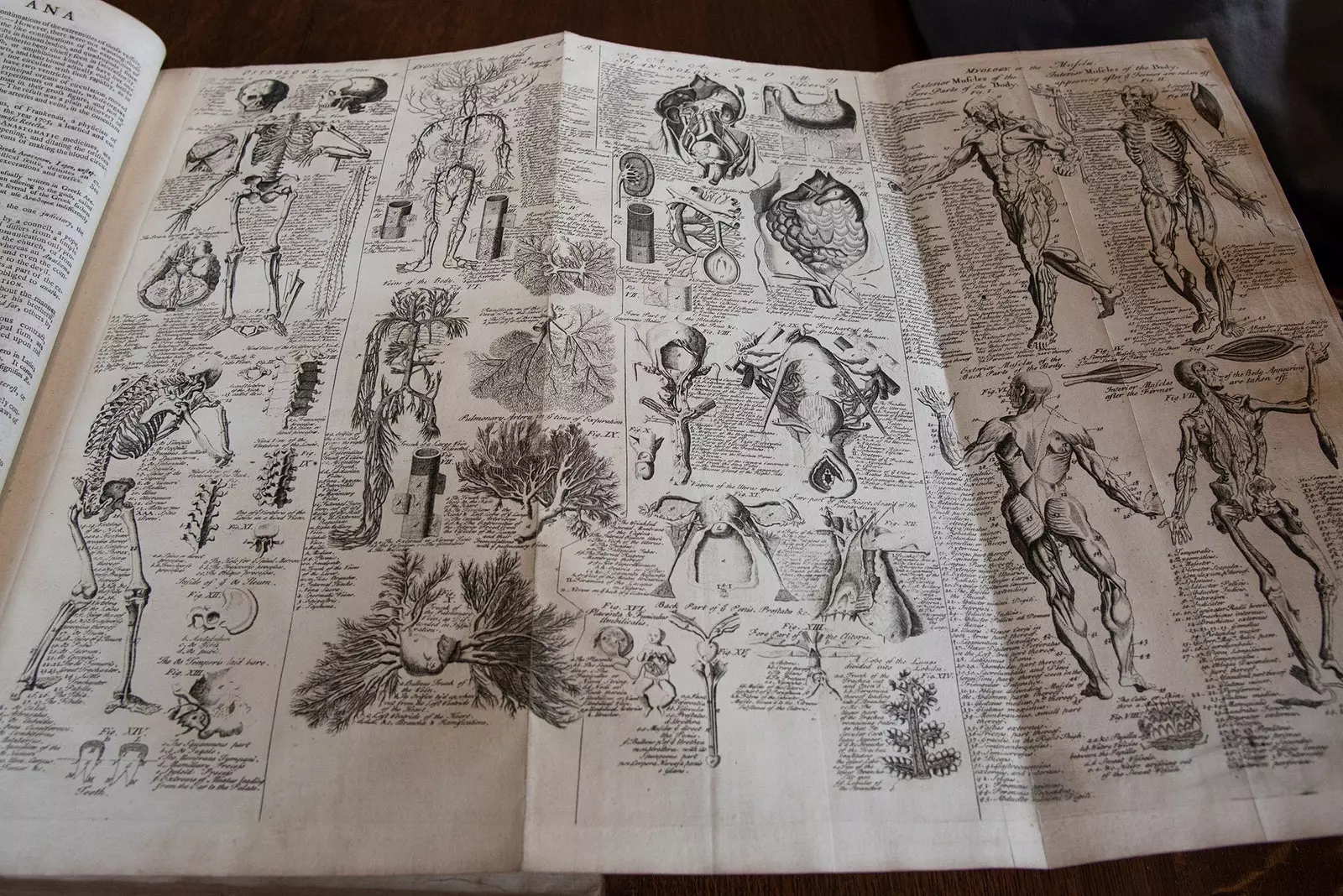
The book that Bram Stoker requested in the Marsh Library in Dublin.
It would not be surprising if Stoker visited one of the most interesting places around Dublin. A lonely valley surrounded by lakes, where the most beautiful monastic complex in Ireland is found: Glendalough. Its name means valley of the two lakes and it was founded in the 6th century.
A tall round tower dominates the entire complex, serving as a shelter and a bell tower. St. Kevin's Church, right next door, is the only stone-roofed building in Ireland. The cemetery that surrounds the monastery, together with the Celtic crosses that decorate it, form a unique ensemble that makes an impact the first time you see it.
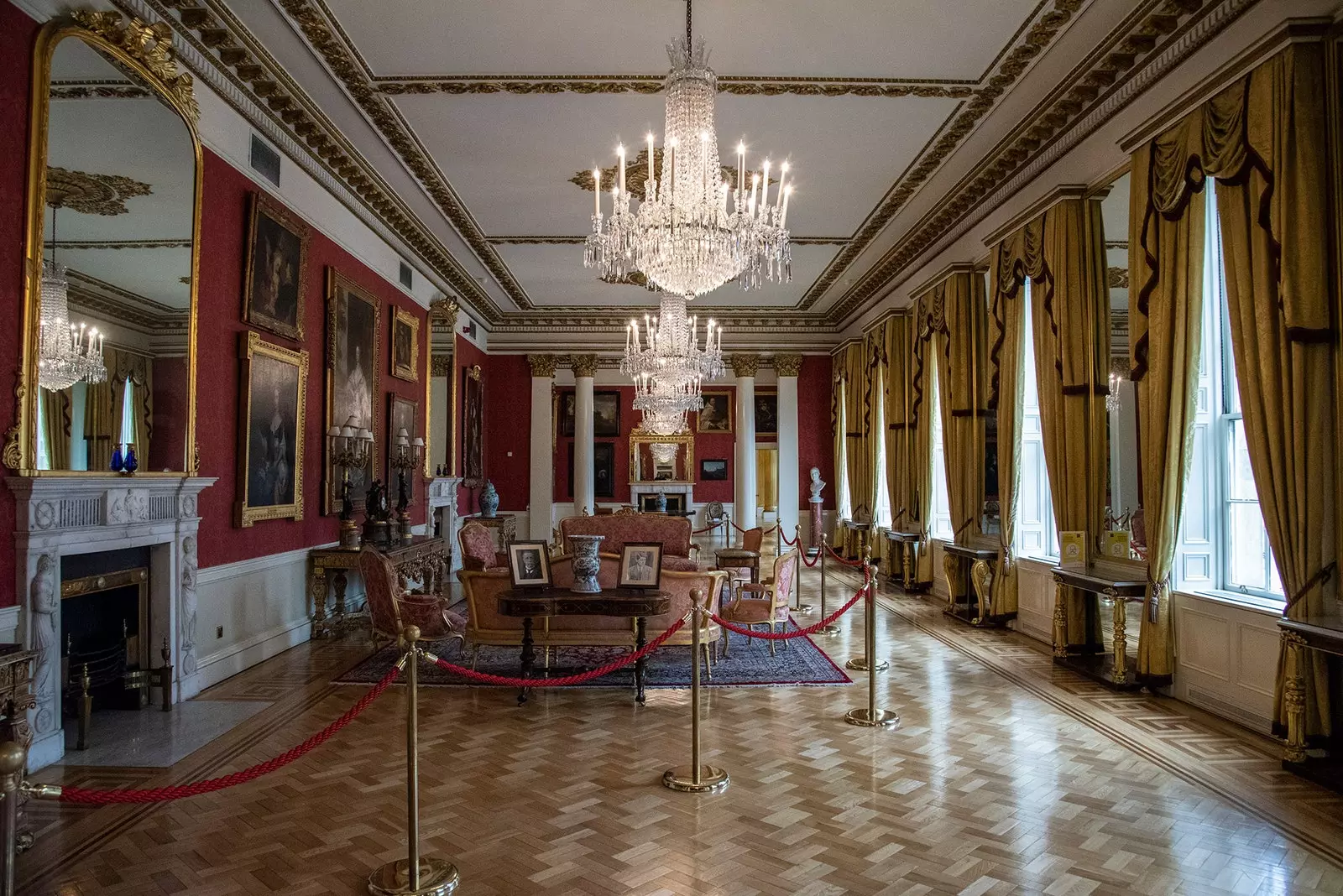
Castle where Bram Stoker worked in Dublin.
Stoker was also a theater enthusiast and in his twenties he met the great English actor Henry Irving, with whom he became a close lifelong friend.
In the Anglican church of Santa Ana, nestled in one of the best neighborhoods in the center of the city, was where Stoker married Florence Balcombe at the age of 31 in 1878. A bust of the writer inside the church commemorates this fact. Just five days later, Stoker and his wife moved to London with Irving, and he would never reside in Ireland again.
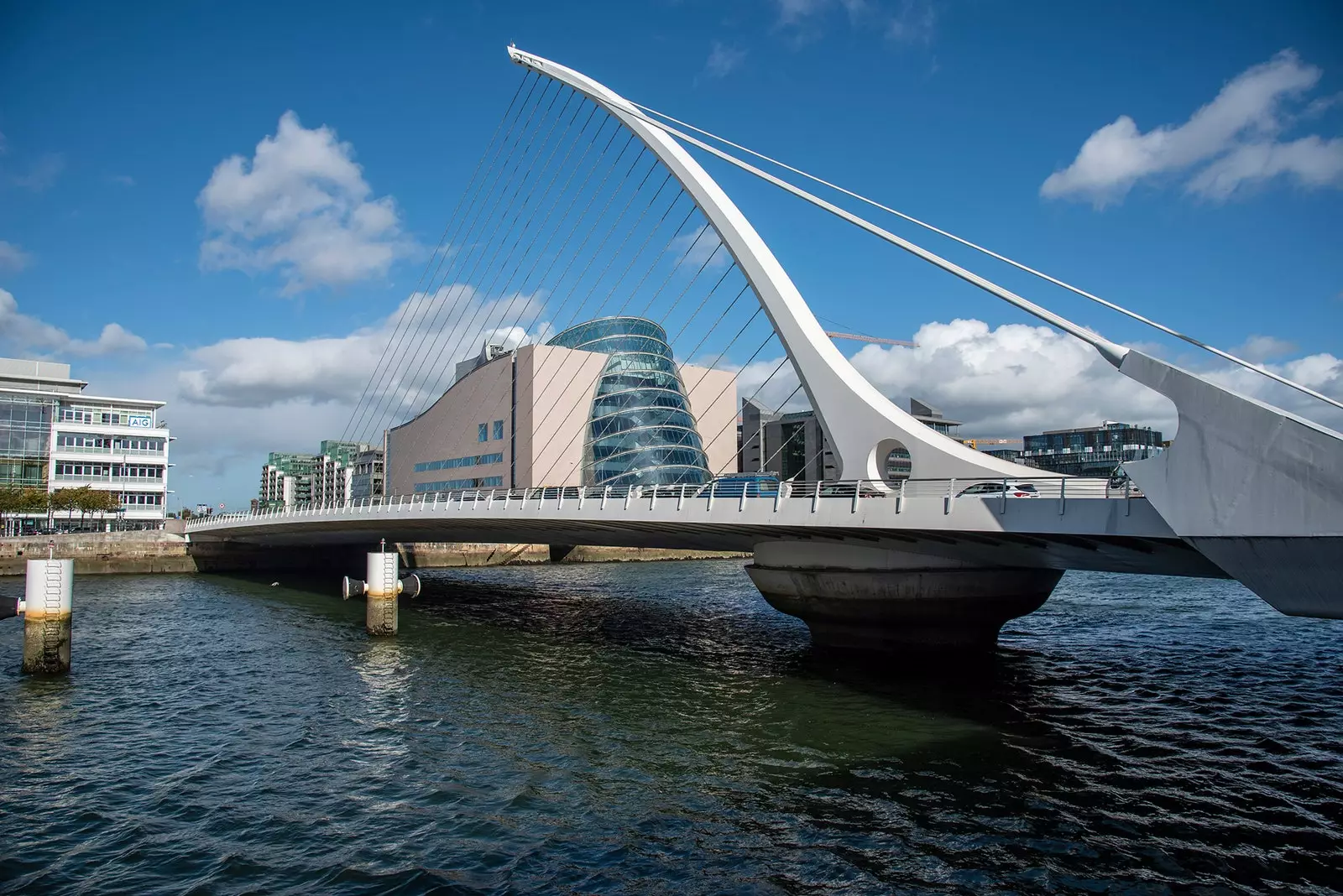
Samuel Beckett Bridge, by architect Calatrava, Dublin.
After his emigration to London, Irving hired her as his personal secretary, combining this work as director of the Lyceum Theatre, and also, he was also a literary critic at the Daily Telegraph.
THE ORIGINS OF DRACULA
Once in London, Stoker begins to bring together all the information that he was storing, studying and reading about vampirism. novels like The Vampire, of Polidori, Frankenstein, of Mary Shelley and, above all, the novel Carmilla, by Sheridan LeFanu, they are sources that surely seduced Stoker, along with all the information he obtained in the libraries of Trinity College and the Marsh Library.
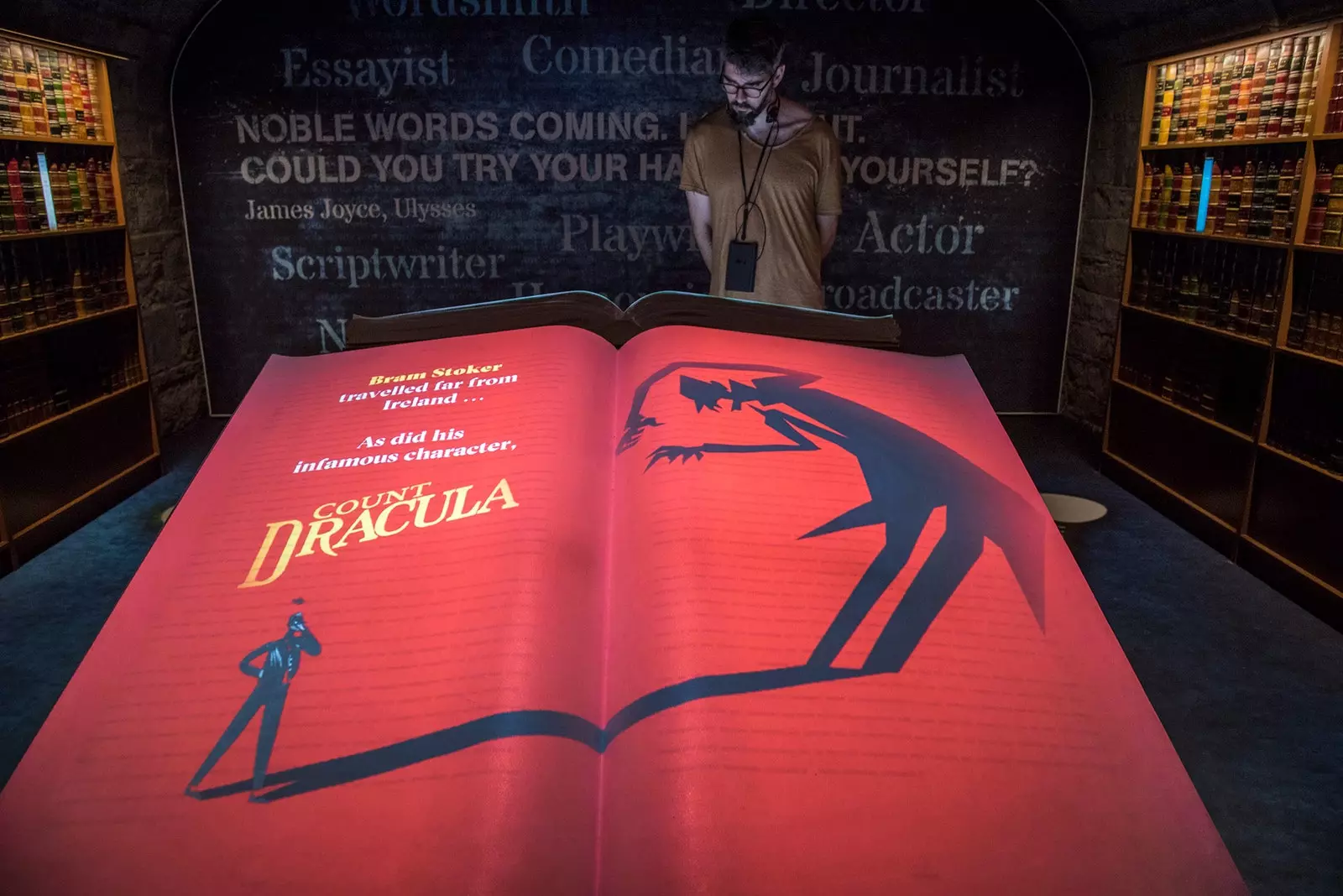
Irish Emigration Museum, Dublin.
There are also references that Stoker relied on conversations he had with a Hungarian character who told him about Vlad Tepes. The origins of the novel are centered by the author at the end of the 19th century in Transylvania, which means "beyond the forests". In this region, which formerly belonged to Hungary and now to Romania, the character of Vlad Tepes really existed, To whom his countrymen gave him the nickname "The Impaler" since, in his fights against the Turks, he cruelly proceeded to impale the prisoners.
There are several versions of Dracula's name, the best known being the following. Tepes's father, called Vlad Dracul (because he belonged to the order of the Dragon), when his son was born he called him Vlad Draculea, since in Romanian the ending "ulea" means-son of-, to later transform into Dracula.
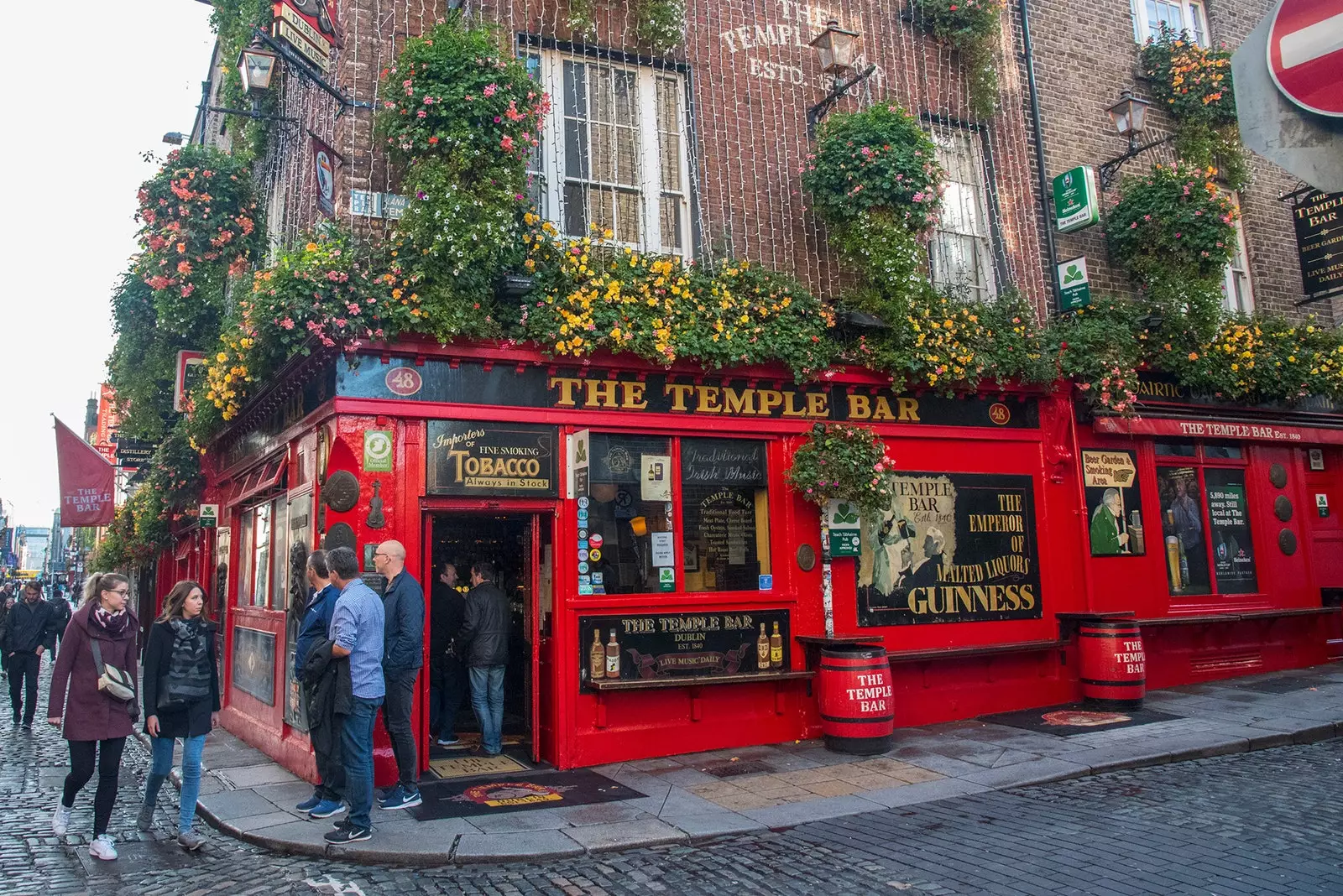
The Temple Bar, Dublin.
The novel is published in 1897 with considerable success, but really it is not until ten years after Stoker's death that the film is released nosferatu the vampire, directed by Murnau in 1922, causing a relaunch of the novel that reaches the highest quotas of popularity.
Thanks to the Seventh Art the dramatic possibilities inherent in Stoker's tale were fully realized and Count Dracula entered the public consciousness usually. From here, hundreds of movies have made this novel universally known and translated into all languages, and in which the protagonist of the book surpasses in popularity that of his own creator of it.
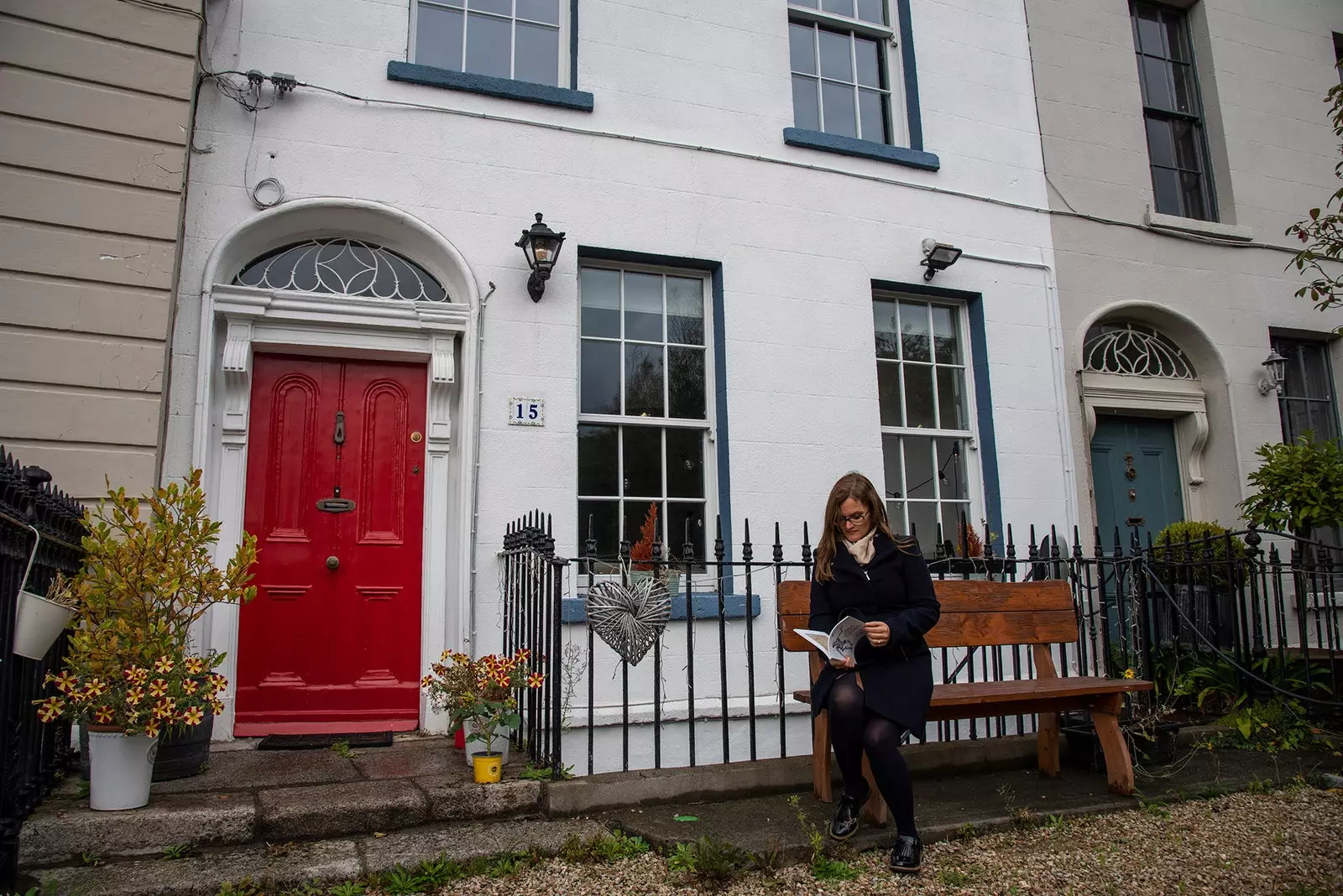
Bram Stoker's birthplace in Dublin.
Who would have thought that a few years after writing Dracula, Bran Castle, located in what is now Transylvania in Romania, would become the Count's abode, since according to legend (although not officially), it was inhabited by the voivode Vlad Tepes, what has made large masses of tourists seek in this castle the legend and fantasy that corresponds to the work and that is intertwined with reality itself:
“…The castle had been built on top of a huge rock, so that it was impregnable on three sides; also the high windows practiced in that wall were impossible to reach by any means. To the east a deep valley could be seen and rising in the distance were some very steep mountains, perhaps a shelter for bandits. and some abrupt peaks…”
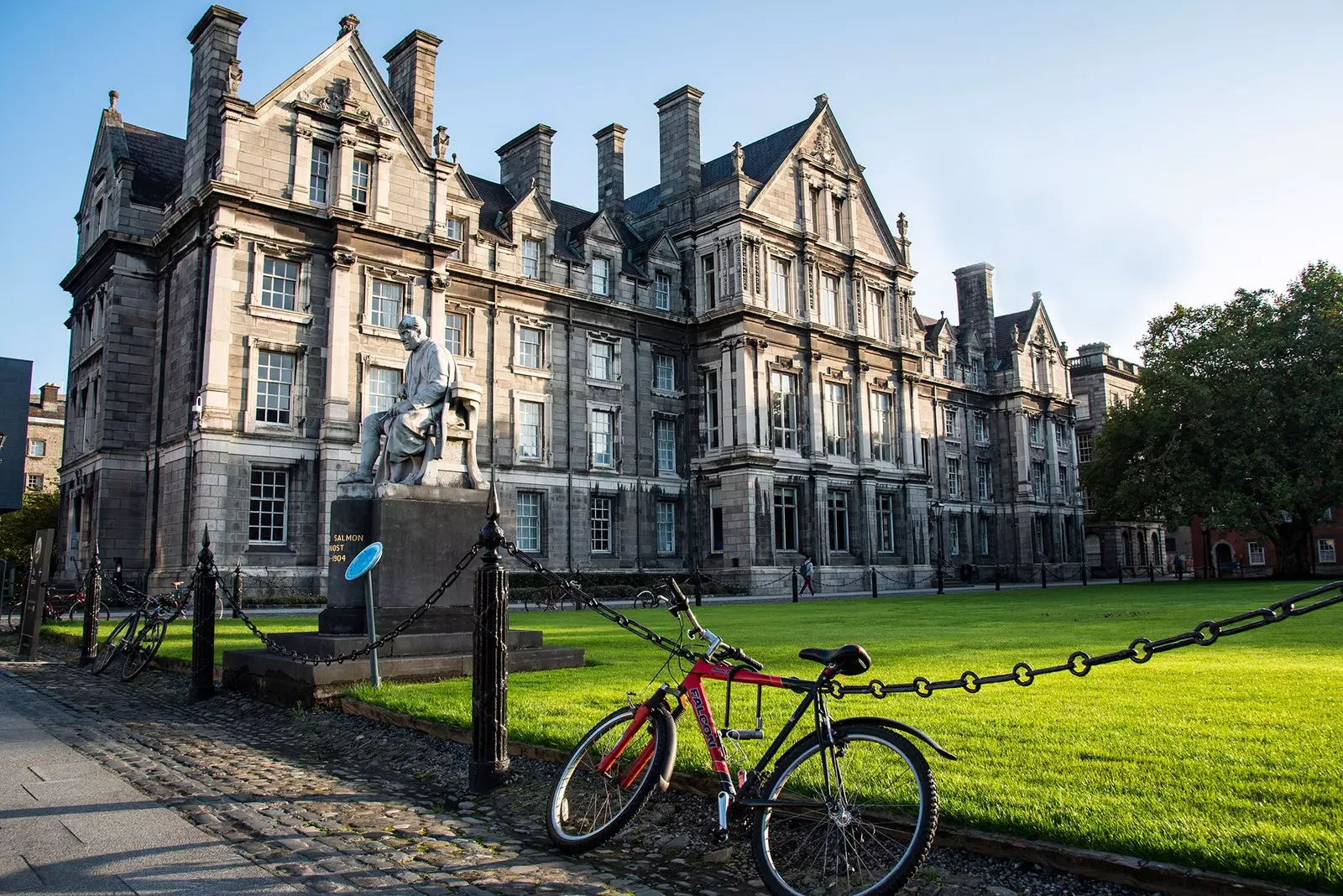
Trinity College, Dublin.
But you won't need to go to Transylvania to enjoy everything about the book. Next October, very probably the Bram Stokers Festival to celebrate this anniversary in which Dracula will be waiting for visitors, to serve as a guide along the route of his creator in this city of Dublin. You are all warned.
